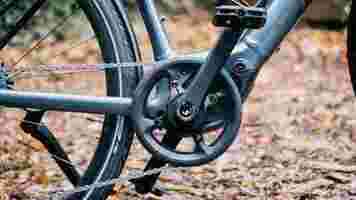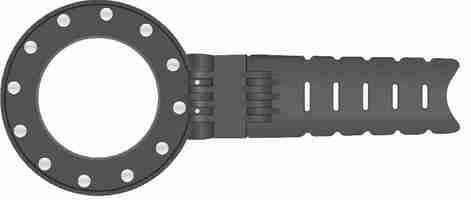An analysis of what would happen if Elon’s proposed tax dollars were spent on public transport
It must be hard being Elon Musk. Yep, everyone’s favourite Space Karen is crying into his Giga bier and fiddling with his flame thrower in angst. He’s aimed his ire at a proposal before the US Senate to tax Musk and his wealthiest friends .

Specifically, these billionaires would fall subject to the 23.8% capital gains tax on the increased value of unsold assets like stocks and bonds.
Elon has plenty of money
Let’s be clear: the man is hardly buying no-name brand baby food for X Æ A-12. His net worth rose by a tidy $36.2 billion alone on Monday in response to a surge in Tesla stock.
He reportedly earns $610.8 million per week — that’s $152.7 million per day, $6.3 million per hour, or $106,000 per minute.
But let’s not forget that as we pay our taxes each year (and he pays none), we’ve effectively been subsiding not only Elon Musk’s lifestyle, but also his vanity projects. While Elon pays capital gains tax and property taxes, he lives in Texas, which doesn’t have a personal income tax.
How do you feel about subsidizing Musk’s vanity projects with your tax?
A large chunk of Elon Musk companies get government funding. In 2015, research by the LA Times into Tesla, SolarCity, and SpaceX found they had received an estimated $4.9 billion in government support in grants, loans, and contracts.
Even dodgier, in 2020, Tesla was delivered more than $400 million from selling environmental credits to automakers that fail to sell enough zero-emissions cars to meet governmental mandates. These credits were the only reason Tesla turned a profit in its early years.
And let’s not forget the amount of cash awarded to Musk companies to send the rich and privileged to Mars. Look, it’s not all bad, for example, SpaceX won $900 million from the US government to extend broadband access to rural America. This is a good investment into satellites, especially if it translates to connectivity to remote areas in South America, Australia, and Africa.
But, most of the cash thrown at Elon Musk’s various enterprises is at the expense of investing in sustainable public transport.
The problem is public transport, not flying people to space


An appalling historical lack of financial and infrastructural investment in US public transport means heavy pollution forces people into their cars — over 70% of Americans drive to work.
It creates road congestion that means some people spend over 40 hours a year in traffic jams. In 2020, LA-area commuters wasted 46 hours on the road, and New York drivers spent around 56 hours.
Furthermore, poor, Black and Hispanic people (as well as the aged and those with disabilities) are the biggest users of public transport. Bad planning in cross-town transport means a relatively short commute can take hours and several transport changes.
But there’s no one championing public transport. There are no sexy launch parties or dedicated party swag, just a sector so vulnerable that it needed massive bail-outs after people stopped riding due to the COVID-19 shutdowns.
While I’m genuinely passionate about transport innovation like autonomous vehicle development, I’d like to see a different allocation of funds. What Elon could potentially pay in tax could fund a heck of a lot.
Elon, how about voluntarily paying some tax to fund public transport?
Let’s look at that single earning on Monday of $36.2 billion and compare it to the cost of public transport. Maths is hard and boring, but let’s make it easy.
We’re going to be talking about millions vs the billions earned by Elon in a single day, so you just need to remember that there’s 1000 million in a billion.
How much tax is needed to fund public transport?
Extending the Los Angeles Metro by 14km (9 miles) costs over $9 billion, so Elon could have made that a 40km extension with his windfall on Monday.
He could even build a more modest railway. Railroad economist Jim Blaze did the math of building a railway line for FreightWaves so we don’t have to. He explained:
He notes that upgrading an older line comes in even lower at a range of $150,000 per mile.
Buses are even cheaper. Texas A&M University predicts route costs of approximately $90,000 to $180,000 per year per new bus. A new bus costs about $500,000 to purchase (probably closer to $800k for electric.)
This is an area begging for innovation. The school bus driver shortage is so severe that the National Guard are now driving school buses .
Let’s not forget the Hyperloop
While I’m not entirely opposed to Hyperloop tech, let’s call a spade a spade, or in this case, a tunnel a tunnel. Elon’s Boring Company spent $52 million on the 1.5 mile Las Vegas’ Loop that’s just a bunch of cars in a tunnel and not even autonomous ones at that. If you’re looking for the Hyperloop, you might be waiting a while.
Ok, Elon is clearly a very important and busy man. I can’t see him stepping up to drive a few kiddies to school or placing a tunnel somewhere really useful that removes the need for massive chunks of bumper-to-bumper driving.
But he could be a bit fucking gracious about paying taxes like the rest of us — and by extension, investing in public transport.
Buying an ebike? You should know about ‘torque’ and ‘cadence’ sensors
Welcome to SHIFT Basics , a collection of tips, explainers, guides, and advice to keep you up to speed with mobility tech.

Before you buy an ebike, you should learn the difference between a ‘cadence’ and ‘torque’ sensor. These sensors are what tell an ebike’s motor how much pedal assistance to provide. The sensor type is one of the most important aspects of a bike’s ride quality, so it’s unfortunate this spec often goes ignored in favor of attention paid to power or battery size.
For some riders, the difference between a cheaper cadence sensor and a fancier torque sensor is massive, and can significantly affect ride quality. For others, torque sensors aren’t worth the premium.
Whichever camp you end up falling into, it’d do you well to know the difference.
Cadence sensors offer the most basic type of pedal-assist technology. They measure how quickly you are turning the pedals, often by placing a series of magnets around the crank arms.
A typical ebike might have 8-14 magnets arranged in a circle, which are used as ‘checkpoints’ for pedal rotation. When movement is detected, the sensor tells the motor to start working.


Though every ebike manufacturer will tune its bikes’ power delivery differently, cadence sensor ebikes generally send specific amounts of power to the motor depending on your pedaling speed and selected pedal assist level. If you have your bike set to a low assist level, for example, the manufacturer has likely set a strict limit on how much power the motor can provide at a given cadence.
The net effect is that cadence sensor ebikes tend to feel a bit like riding with a pedal-activated on-and-off switch.
As a general rule, cheaper ebikes only come with cadence sensors. Almost anything under $1,500 will be cadence-only.
A torque sensor, on the other hand, measures how hard you are pedaling — in other words, how much force you’re applying to the pedals.
On the surface, it might seem like cadence is directly tied to effort, but not always. For example, when going up a hill, carrying heavy cargo, or starting from a stop, you’ll need more power than when cruising along a flat road. Likewise, you probably want your bike to provide less of a boost when you’re going downhill.
Because it is continuously analyzing effort rather than just checking for rotation at a handful of intervals, a torque sensor is able to adjust the motor’s assistance more dynamically and intuitively.
Say you’re riding along a flat path and come across a hill. On a cadence sensor bike, you’ll likely get the same amount of power going up the hill as you did on the flat; if you’re on a low assist level, you might find yourself turning the assist level up to compensate. Granted, the motor might ramp up a bit if your cadence falls below a certain threshold, but it’s not fully responsive to your efforts.
[Read more: How to use AI to better serve your customers ]
With a torque sensor ebike, the motor’s power delivery can vary more widely and dynamically. In some cases, you might not need to turn up the assist level as you attack the hill, because the ebike can tell you need more help.
Similarly, cadence sensors can feel a little jerky at high pedal assist levels. They will tend to take longer to get started to ‘calculate’ your cadence, and if you are on a high assist level, moving your pedals just a little bit can lead to a big surge in motor power.
A torque-sensing ebike can tell if you’re pushing the pedals gently. If you gingerly move the pedals (say, when riding in the rain), it won’t provide a ton of power even you are on a high assist level. But pedal hard and the bike will respond proportionately.
This means a well-implemented torque sensor will feel far closer to riding an ‘acoustic’ bike — less like you’re being pushed along by a motor and more like you’ve been given superhuman legs.
Torque sensors also usually extend battery range, as they only deliver as much power as needed. In contrast, I find myself having to brake more often on cadence-only systems to regulate my speed.
The caveat is the price. Torque sensors are far more sophisticated components and thus a lot more expensive to make, so they’re typically only offered in more expensive ebikes.
In my experience, most torque sensor bikes are above $2,000, and below $1,500 is extremely uncommon. And if a bike’s spec sheet doesn’t specify the sensor type, it is almost certainly using a cadence sensor only, especially if it has a hub-drive motor.
In my experience, yes. But there are some nuances to be aware of.
Some cadence sensors bikes try to replicate a more natural pedaling experience by employing smoother power delivery curves or using more magnets to poll for cadence at smaller intervals.
If you want a throttle, you’re also more likely to find one on a cadence-based ebike. That’s because many torque sensor ebikes use mid-drive motors, and the majority of these don’t support throttles. The throttle partly makes up the difference, as it allows you to get all the power you need out of the motor without having to change assist levels.
Likewise, not all torque-sensing systems are made equal, and some are smoother than others.
There are even people who might prefer a cadence-only system, such as some of those who have sensitive joints. Torque sensors are typically (not always!) tuned to require a little more effort to really get going, whereas a cadence-based ebike doesn’t care about your effort, only that you’ve rotated the pedals enough.
There are a lot of variables to consider. But all else being equal, is a torque sensor is worth the premium? That’s something only you can decide.
For example, you might not find the difference significant if you just want a bike for errands, commuting, and cargo.
On the other hand, if you really enjoy the cycling part of ebikes, there’s a good chance you’ll prefer the more natural input provided by a torque sensor. You don’t need to be a die-hard cyclist either; I’m a casual rider and I still find it hard to go back to cadence-only ebikes these days.
Of course, that doesn’t mean you can’t enjoy the cycling experience with a cadence-only ebike; it’s just the torque-sensing premium may not be worth it.
If possible, try to test-ride cadence-only and torque-enabled ebikes available around you, and see if you can tell or care about the difference. This is easier said than done in this age of coronavirus, but it’ll give you a better idea of what to expect.
Hopefully, as ebike technology advances and components become cheaper, you won’t have to choose.
SHIFT is brought to you by Polestar. It’s time to accelerate the shift to sustainable mobility. That is why Polestar combines electric driving with cutting-edge design and thrilling performance. Find out how .
Canada refuses to learn what an ebike is — and it’s gonna cause problems
With the proliferation of ebikes and other micromobility devices, Canada has decided it’s high time to take a look at how it regulates the tech.

Reviewing regulations to bring them up to date for new tech sounds like a good thing, but in this case Canada is kind of missing the point. It could make ebikes, escooters, and the like a lot less enticing for Canadians if things don’t pan out.
So what’s going on?
As of February 4, Canada’s regulators have decided to repeal its Power Assisted Bicycle (PAB) definition, The Globe and Mail reports .
PAB was created to exclude ebikes from the country’s Motor Vehicle Safety Regulations, and govern them under their own set of rules. However, Canada has decided that it’s going to let provinces and territories decide how ebikes are regulated and governed.
That’s a problem.
In a country as large and diverse as Canada, there is going to be as broad a range of opinions on how ebikes, escooters, and other mobility devices should be regulated. What’s more, it’s not like they’re all regulating just one type of device either.
Most other nations, like the EU, regulate in a collaborative way to make rules and consistent and wide-reaching as possible.


Ebikes come in all forms, from low-powered town bikes, to high-powered cargo carrying machines. Escooters are equally confusing, have varying capabilities, and come with a variety of ownership models. And what about hoverboards, electric skateboards, monowheels, or even Segways?
That’s the crux of the problem here. An already diverse collection of devices, which lacks consistent terminology, is being regulated by an equally broad and diverse set of governmental regions.
The risk is simple: a lack of national regulations will lead to confusing bureaucracy that’s inconsistent and challenging to understand. The outcome? People won’t bother. If I was a Canadian, I wouldn’t stand for it.
It’s not just a shame if people turn away from ebikes and escooters, it’s an environmental injustice, I tell you!
There’s been study after study about how much better cycling is than driving for the planet. It’s a pain to see governments not taking it seriously enough and regulating it in a simple and proactive way.
It’s almost as if the Canadian government can’t be bothered and is just delegating to its regions to save time. In reality, it’s likely to create more headaches, and it’ll be citizens that pay the price.
As urban planner and director of a Canadian non-profit cycling advocacy group Darnel Harris told The Globe and Mail:
SHIFT is brought to you by Polestar. It’s time to accelerate the shift to sustainable mobility. That is why Polestar combines electric driving with cutting-edge design and thrilling performance. Find out how .